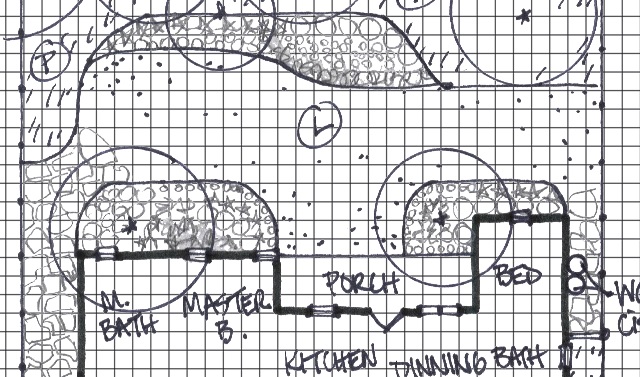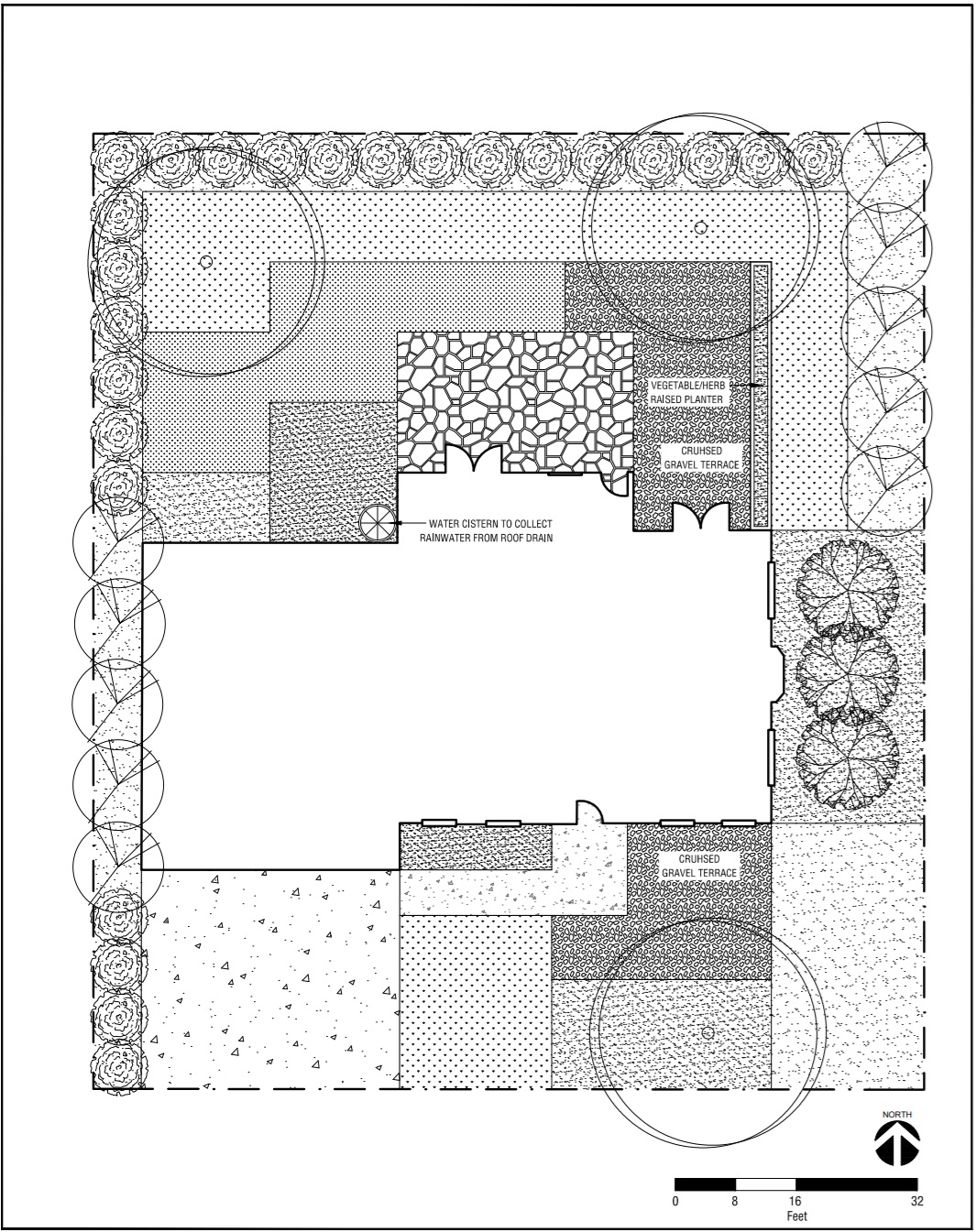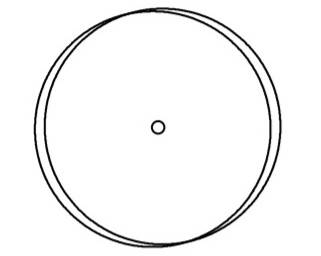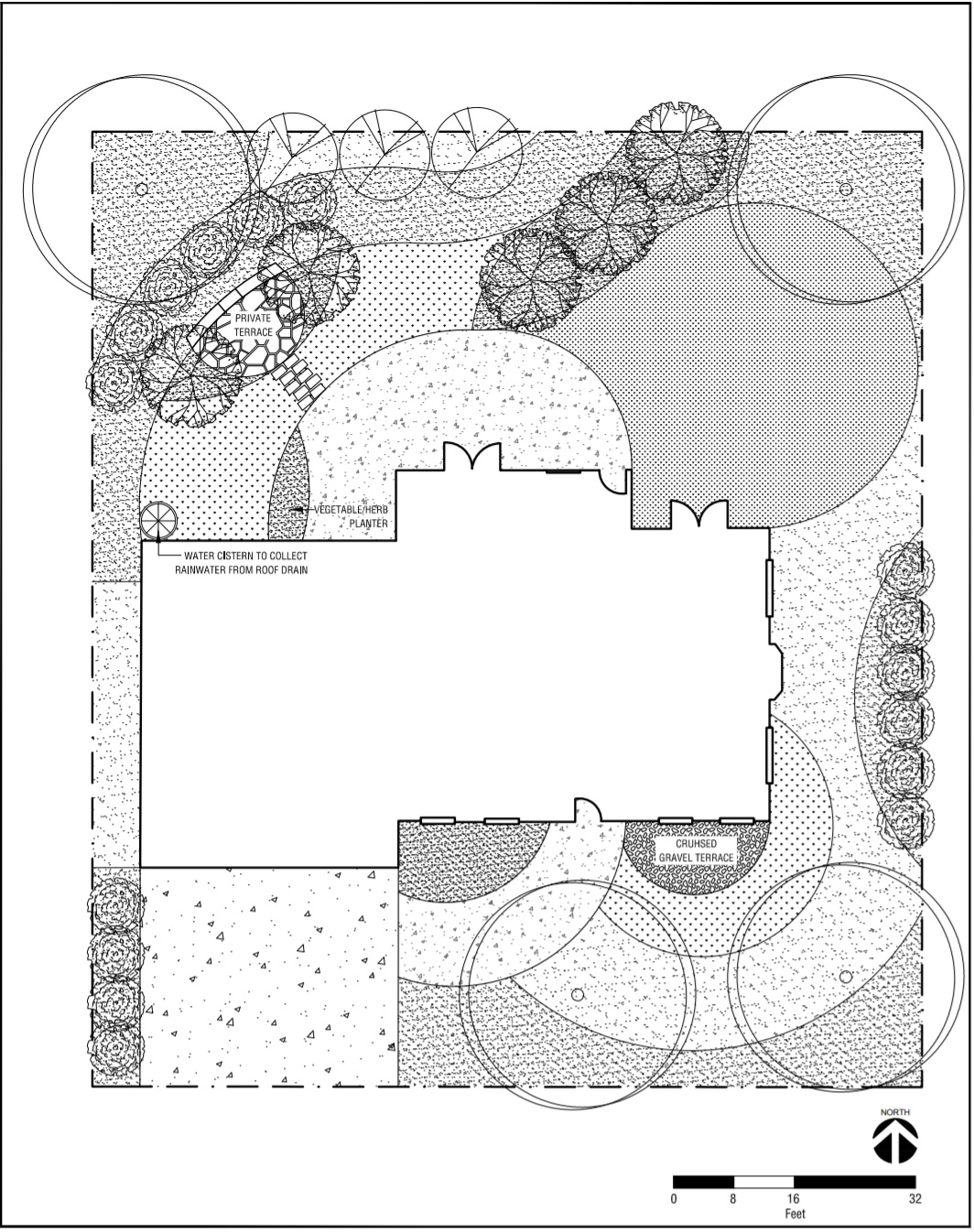Outdoor Water Conservation: Water Saving Design Ideas for Oklahoma Landscapes
About this guide:

The City of Oklahoma City Utilities Department has partnered with the Oklahoma State University
Department of Horticulture & Landscape Architecture and the Oklahoma Cooperative Extension Service to promote outdoor water conservation through proper outdoor watering and drought-tolerant landscaping. The designs in this guide provide several concepts incorporating the different elements and principles of design. These designs are intended to provide inspiration and ideas for a typical residential application. The plants listed in this guide are suitable for Oklahoma and were chosen for their heat and drought tolerance.
How to use this guide:
This booklet provides six different landscape designs all differing in general concept and in array of plant selection and planting strategy. Each design is accompanied by a narrative explaining the basic elements and principles to each concept and how plants can be used to compliment the forms created by bed arrangements, lawns, and hardscape areas.
The designs provided are intended to serve as inspiration and generate ideas for specific application to residential properties. Various factors such as lot size, architectural features, and environmental conditions affect decisions made in landscape design. Additional plants well-suited for Oklahoma water conservation can be found in the Plant Selections for Oklahoma booklet. The plants listed are not all inclusive and many other plants not listed in this booklet may be appropriate for the landscape.
Seven Principles For Creating a Water Conservering Landscape
1. Good Landscape Plaining and Design
Consider aspects of your property such as building footprint, utilizing hardscape areas, slope and drainage, areas for turf as needed, and attractive looking plants that require limited water use.
2. Low Water Use Plants
Many attractive native plant cultivars that are well-suited for the natural environmental conditions are available at local nurseries and garden centers. Other drought tolerant non-native species may be appropriate if tolerant of temperature extremes and other conditions such as soil type, sun requirements, and disease resistance. Use moderate water using plants near the home and heavily trafficked areas and transition to very low water use plants near property perimeter and in less visible areas.
3. Appropriate Turf Areas
Turf has its purpose in the landscape, but should be used efficiently and effectively. Consider how the turf area will be used when selecting a turf species. Bermuda grass can be maintained at a lower height, making it ideal for high traffic areas that will be used for play areas and recreation. Buffalo Grass, Blue Grama Grass or a similar native mix is a better water conserving alternative for turf areas that will not be as intensely used.
4.Efficient Irrigation
Plants should be grouped into water use zones to maximize efficient irrigation and prevent over watering. Irrigate turf areas separate from other areas. Drip irrigation in other planting areas will prevent water being wasted by runoff. Rain sensors can be installed on controllers to prevent unneeded irrigation when the soil has adequate moisture for plant health. Water cisterns can be tied into roof drain systems, collecting stormwater that can be used for supplemental watering in garden areas for vegetables and herbs.
5. Soil Improvements
Addition of organic matter and other soil amendments will provide a healthy growing medium for plants, keeping plants from becoming overstressed during extreme environmental conditions.
6. Use of Mulches
Mulch acts as a buffer retaining soil moisture, preventing weed growth, and can help control soil erosion caused by stormwater runoff.
7. Appropriate Maintenance
Careful attention to routine maintenance is important in a landscape’s aesthetic and functional quality. Pruning, weeding and using an organic fertilizer at regular intervals will help the landscape continue to grow and achieve the initial intended design.
Rectilinear Design Concept
This landscape design concept emphasizes architectural features of the home by aligning trees and planting beds with elements such as exterior walls, windows and doors. Plants are placed and organized in a very formal, or grid-like, fashion. Selected plants should be very uniform and neat in nature. Smaller ornamental plants should be arranged in single species masses, utilizing either triangular or soldier type spacing. This type of design compliments the architectural aspects of a property and provides a very orderly landscape for easy maintenance.
Legend 1. Landscape Planting Options
Curvilinear Design concept
This landscape design concept uses swooping gestures and large tangent arcing forms to mimic a more naturalistic looking landscape. The forms created by this design strategy suggests movement that should be reflected in plant selection. Large masses of airy perennials and shrubs can be grouped in a swooping contour to bed edges, with intermittent structural plantings to provide contrast and anchor ends of planting beds. Try and avoid creating tight, acute angles at bed intersections and near hardscape areas. These sharp angles can present maintenance challenges, making it difficult to plant, mow, and water effectively.
Legend 2. Landscape Planting Options
Radial Design Concept
This landscape design concept utilizes several circular center points strategically placed, based off architectural elements, and radiating arcs to create a combination of hardscape forms, planting beds, and lawn areas. Layer plantings in this configuration is important to create picturesque views from seating areas. Consider plant height, color and foliage texture when using this layer technique. Use taller plants near edges of the property and the home. Transition to shorter plants when nearing hardscape areas. Use differing plant textures when layering to provide contrast in foliage and movement. Also consider plants' color and time of bloom to provide year-round interest.
Legend 3. Landscape Planting Options.
Geometric Design Concept
This landscape design concept is similar to the rectilinear concept in terms of forms perpendicular to architectural features. It differs in its use of repeating patterns that are similar and proportionate to one another or abstractions that mimic other forms in the landscape. Plant selections should reflect the same similarities in respect to these proportions. Arrange plants in groupings within beds that mimic the forms created by hardscape features, lawn areas, and the different bed shapes. Using this repetition of patterns in different proportions creates a unified landscape with interesting variety in scale and proportion.
Legend 4. Landscape Planting Options
Organic Design Concept
This landscape design concept utilizes forms similar to the curvilinear concept but truly emphasizes focal forms that are generally created by closed curves and lack sharp angles. Perpendicular and slightly acute angles can be used in other areas of the landscape to focus visual attention to the most important areas of the outdoor space. In this case, the large back patio area and recreational lawn area. In order to maintain the organic design in the secondary planting areas that include sharper angles, use the same concept by using larger closed organic forms of plant masses and compliment the smaller negative spaces left over with accent planting that receive less attention.
Legend 5. Landscape Planting Options.
Modern Prairie Design Concept
This landscape design concept combines the idea of an American Prairie plant palette
with principles of a modern, irregular use of lines for hardscapes and planting boundaries.
This combination achieves a contrasting scheme of very naturalistic plant materials
with very constructed arrangement, with strong relationship to architecture. A strong
emphasis on native plants is used in this type of design, but similar to the rectilinear
design, are planted in regimented fashion using soldier or triangular spacing. Areas
further away from the home near property edges can be planted in a more natural arrangement
including wildflower mixes to maintain the natural ecosystem qualities of the plant
selections.
Legend 6. Landscape Planting Options.

The City of
OKLAHOMA CITY
UTILITIES DEPARTMENT
















